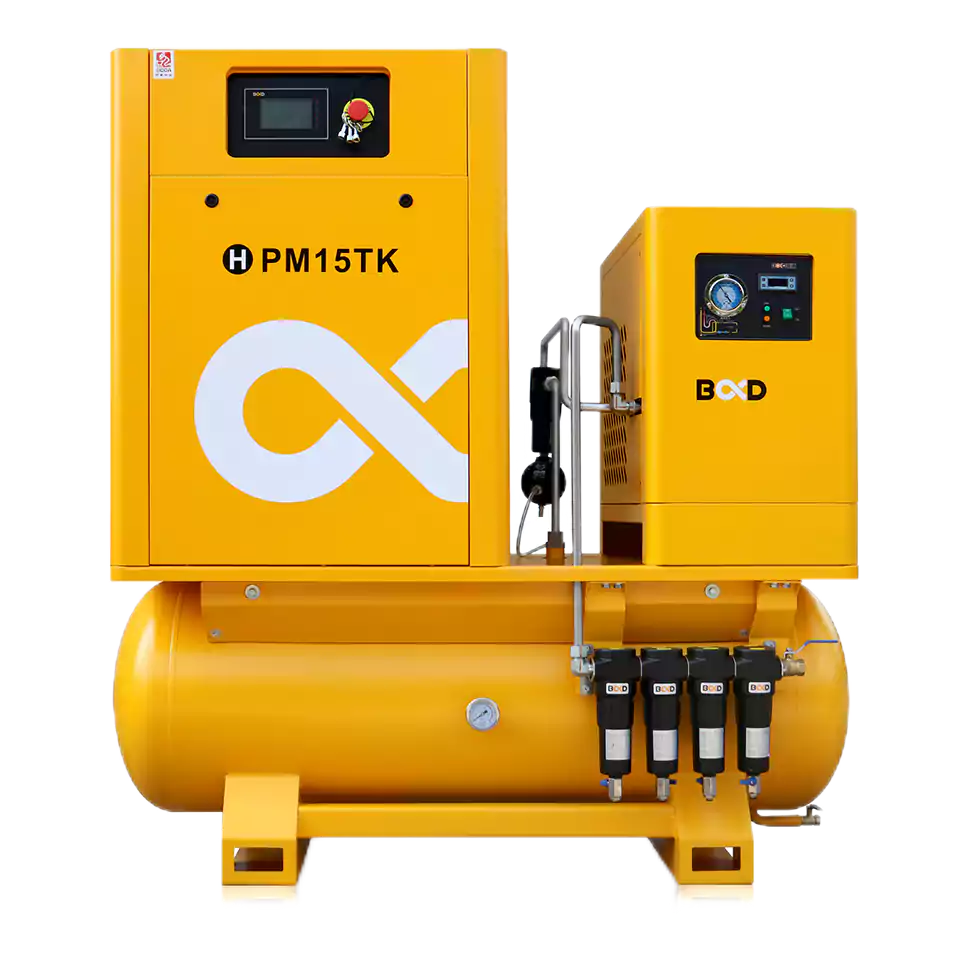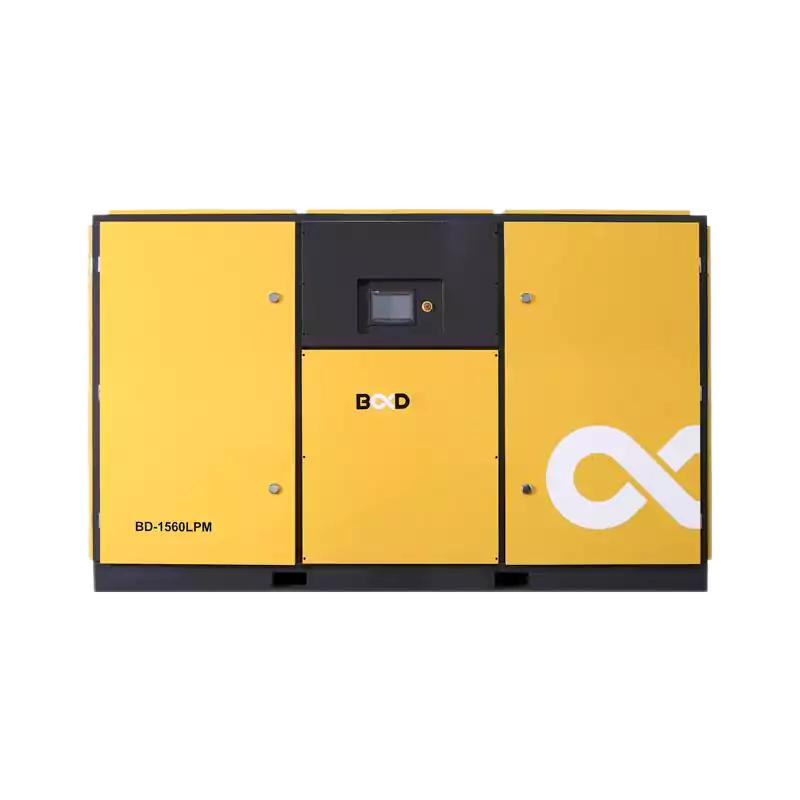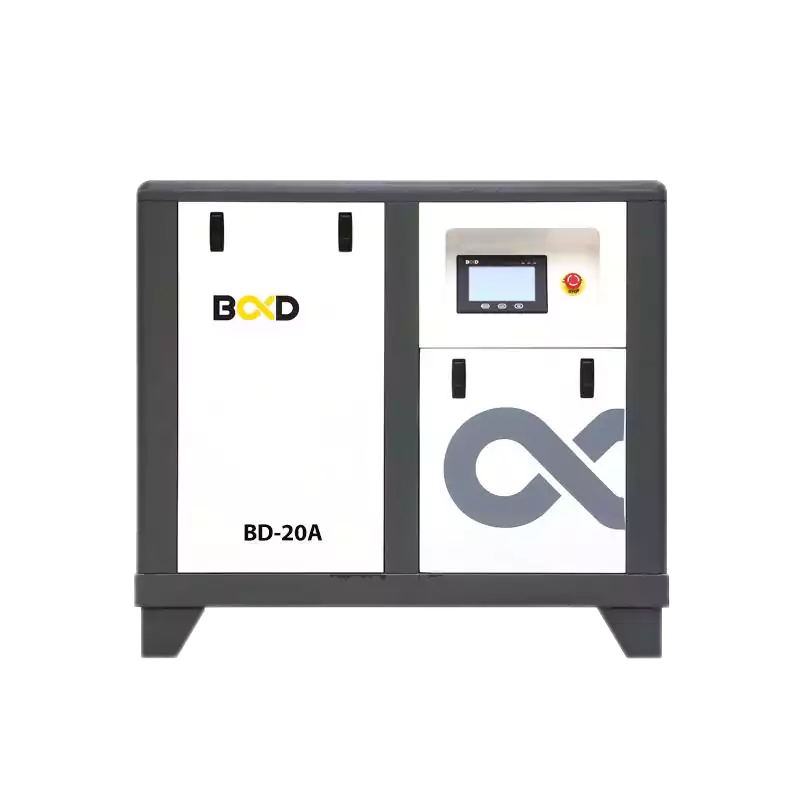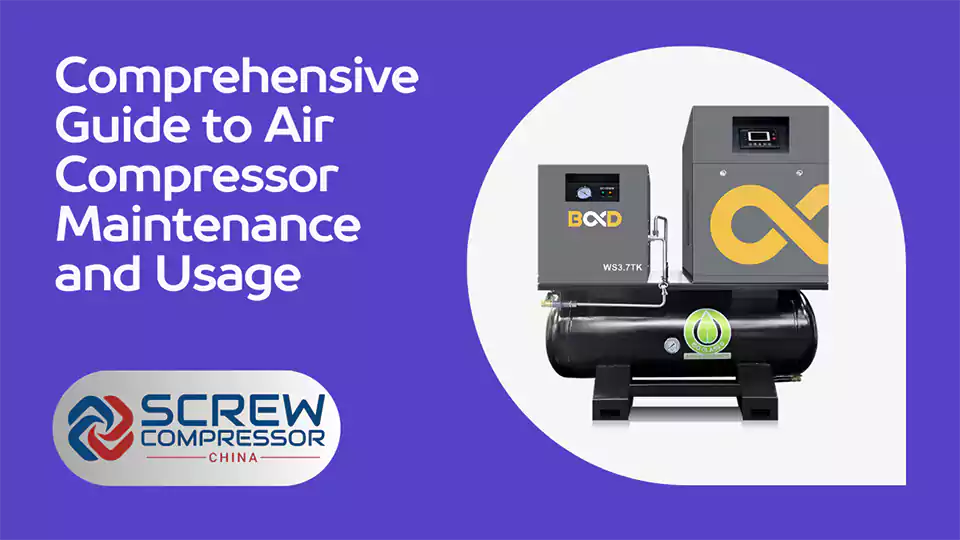
Air compressors are invaluable tools in various industrial, automotive, and construction settings. They work by compressing atmospheric air which is then used to power tools, apply paint, and perform numerous other tasks requiring high-pressure air.
Air compressors come in various types, each designed for specific applications. The most common types include:
- Reciprocating air compressors: These use pistons driven by a crankshaft to compress air. They are suitable for intermittent use and can deliver high pressure.
- Rotary screw air compressors: These use two meshed rotors to compress air continuously. They are ideal for constant, high-volume air demand and are more energy-efficient than reciprocating compressors.
- Centrifugal air compressors: These use a rotating impeller to accelerate and then decelerate air, causing it to pressurize. They are used in large industrial applications requiring very high air volume.
Understanding the type of air compressor you have and its specific maintenance requirements is crucial for ensuring optimal performance and longevity.
What Is an Air Compressor?
An air compressor converts power into potential energy stored as compressed air. By forcing more and more air into a storage tank, the air pressure increases, and this pressurized air can be harnessed to perform a variety of tasks.
The main components of an air compressor include:
- Intake filter: Filters the incoming air to remove contaminants.
- Compressor pump: Compresses the air using either reciprocating pistons, rotary screws, or a centrifugal impeller.
- Motor: Powers the compressor pump. Can be electric, diesel, or gasoline-powered.
- Pressure switch: Controls the air pressure in the tank by turning the motor on and off.
- Tank: Stores the compressed air.
- Pressure regulator: Adjusts the outgoing air pressure to match the requirements of the tool or application.
- Moisture trap: Removes water from the compressed air to prevent rust and other moisture-related issues.
Understanding how these components work together is key to properly maintaining and troubleshooting your rotary screw air compressor.
Steps for Effective Air Compressor Use
Preparing Your Air Compressor
Position your air compressor on a flat, stable surface to avoid operational issues. Make sure it’s connected to a grounded outlet to ensure safety. Learn the initial steps for setting up your air compressor effectively.
Before starting your air compressor, always perform a visual inspection to ensure all components are in good condition and properly connected. Check for any signs of wear, damage, or leaks, and address these issues before using the compressor.

It’s also important to ensure that your air compressor is properly sized for your application. Using an undersized compressor can lead to overheating and premature wear, while an oversized compressor wastes energy and can cause excessive cycling.
Routine Checks and Maintenance
Checking Oil Levels and Air Filters
Regular checks are crucial for maintaining your air compressor’s efficiency. Start by checking the oil level and ensuring that the air filters are clean to prevent any mechanical issues.
Most air compressors require regular oil changes to keep the compressor pump lubricated and running smoothly. Consult your owner’s manual for the recommended oil type and change interval, which can vary from 500 to 2,000 hours of operation depending on the compressor type and usage.
Air filters should be inspected monthly and replaced when they become dirty or clogged. A clean air filter ensures that your compressor is taking in clean, contaminant-free air, which extends the life of the compressor pump and improves efficiency.
Drain Valve and Moisture Removal
Always check the drain valve to ensure it is fully closed before starting the unit. After use, remove excess moisture from the air tank to prevent rust and other moisture-related damages.
Moisture buildup in the air tank can lead to corrosion, which weakens the tank and can cause dangerous tank failures. To prevent this, drain the tank after each use and consider installing an automatic tank drain if your compressor doesn’t already have one.
In addition to draining the tank, it’s important to install and maintain moisture traps and filters in your compressed air lines to remove moisture before it reaches your tools and equipment. Moisture in your compressed air can cause tools to rust, leading to premature failure.
Setting and Adjusting Controls
Adjust the PSI to the required level for the tool you are using. This ensures that you are using the right amount of pressure and that your tools are operating safely and effectively.
Different tools require different operating pressures, so it’s important to consult your tool manual and adjust your compressor’s pressure regulator accordingly. Using too much pressure can damage tools and cause them to wear out faster, while using too little pressure can result in poor tool performance.
It’s also important to set your compressor’s pressure switch to the correct cut-in and cut-out pressures. The cut-in pressure is the point at which the compressor turns on to refill the tank, while the cut-out pressure is the point at which the compressor turns off once the tank is full. Setting these pressures correctly ensures that your compressor operates efficiently and doesn’t waste energy by cycling on and off too frequently.
Advanced Air Compressor Maintenance
Regular maintenance is essential to keep your air compressor running smoothly. This includes comprehensive checks and replacing parts like hoses and fittings when they show signs of wear. For those using towable air compressors, it’s vital to perform checks before and after transportation.
Advanced air compressor maintenance tasks include:
- Inspecting and replacing drive belts: Over time, the drive belts that connect the motor to the compressor pump can stretch, crack, or fray. Inspect these belts regularly and replace them when they show signs of wear to prevent unexpected breakdowns.
- Checking and replacing air-end bearings: The bearings in the compressor pump’s air-end support the rotors and allow them to turn smoothly. These bearings can wear out over time, causing increased noise, vibration, and eventually failure. Have a professional technician inspect and replace these bearings as needed.
- Cleaning heat exchangers: Many air compressors use heat exchangers to cool the compressed air before it enters the tank. Over time, these heat exchangers can become clogged with dirt and debris, reducing their efficiency and causing the compressor to overheat. Clean these heat exchangers regularly to maintain optimal performance.
- Inspecting and replacing valves: The valves in your air compressor control the flow of air into and out of the compressor pump. These valves can wear out over time, causing reduced performance and efficiency. Inspect these valves regularly and replace them as needed to maintain peak performance.
- Checking and tightening fasteners: Vibration from the compressor can cause fasteners to loosen over time, leading to leaks and other issues. Regularly check and tighten all fasteners, including bolts, nuts, and screws, to prevent leaks and ensure optimal performance.
By performing these advanced maintenance tasks on a regular basis, you can extend the life of your air compressor and ensure that it operates at peak efficiency for years to come.

Special Considerations for Industrial Air Compressors
In an industrial setting, maintaining an industrial air compressor involves regular checks every 1,000 to 2,000 hours of operation. Maintenance tasks include checking drain valves, cleaning strainers, and blowing out condenser coils to ensure optimal performance.
Industrial air compressors are typically larger and more complex than their smaller counterparts, and they often operate continuously to meet the demands of manufacturing processes. As a result, they require more frequent and comprehensive maintenance to ensure reliable operation and prevent costly downtime.
In addition to the maintenance tasks outlined above, industrial air compressor maintenance may include:
- Oil analysis: Regularly analyzing the compressor oil can provide valuable insights into the health of the compressor. Oil analysis can detect contaminants, such as metal particles or coolant, which can indicate wear or other issues that need to be addressed.
- Vibration analysis: Excessive vibration can indicate issues with the compressor’s bearings, foundation, or other components. Regularly monitoring vibration levels and analyzing trends can help detect potential problems before they cause a breakdown.
- Thermographic inspection: Using infrared cameras to inspect the compressor and its components can help detect hot spots or other temperature anomalies that may indicate impending failure.
- Ultrasonic leak detection: Compressed air leaks can be difficult to detect, but they can cause significant energy waste and reduce the efficiency of the compressed air system. Using ultrasonic leak detectors can help identify and locate leaks so they can be repaired.
By implementing a comprehensive maintenance program that includes these advanced techniques, industrial facilities can maximize the reliability and efficiency of their oil-flooded screw compressors, minimizing downtime and reducing operating costs.
Frequently Asked Questions
Q: How often should I check the oil level in my air compressor?
A: Check the oil level before each use to ensure proper lubrication of moving parts.
Q: What is the importance of draining moisture from the air tank?
A: Draining moisture prevents rust and corrosion inside the air tank, extending the life of your compressor.
Q: Can an air compressor be used to power all types of pneumatic tools?
A: Yes, air compressors can power a variety of pneumatic tools, providing the necessary torque and speed for tasks like nailing, stapling, and sanding.
Q: How often should I replace the air filter in my compressor?
A: The frequency of air filter replacement depends on the environment in which the compressor operates and the amount of use it gets. As a general rule, inspect the air filter monthly and replace it when it becomes dirty or clogged. Consult your owner’s manual for specific recommendations for your compressor model.
Q: What should I do if my air compressor is not building pressure?
A: If your air compressor is running but not building pressure, there are several potential causes. First, check for air leaks in the system, including the connections, hoses, and fittings. If no leaks are found, the issue may be with the compressor’s intake valve, pressure regulator, or check valve. Consult your owner’s manual for troubleshooting steps, or contact a professional technician for assistance.
Q: How can I extend the life of my air compressor?
A: To extend the life of your air compressor, follow these best practices:
- Perform regular maintenance as outlined in your owner’s manual, including oil changes, air filter replacements, and tank draining.
- Use the correct type and amount of oil as specified by the manufacturer.
- Ensure the compressor is properly sized for your application to avoid overworking the unit.
- Store the compressor in a clean, dry location to prevent rust and corrosion.
- Repair any leaks or other issues promptly to prevent further damage.
By following these guidelines and performing regular maintenance, you can help ensure that your variable speed screw air compressor provides reliable, efficient operation for years to come.
Meta Description:
Explore our comprehensive guide to air compressor usage and maintenance. Learn how to prepare, maintain, and efficiently use your air compressor to power tools and perform a variety of tasks. Discover essential maintenance tips and read our FAQ for quick answers to common compressor questions.
